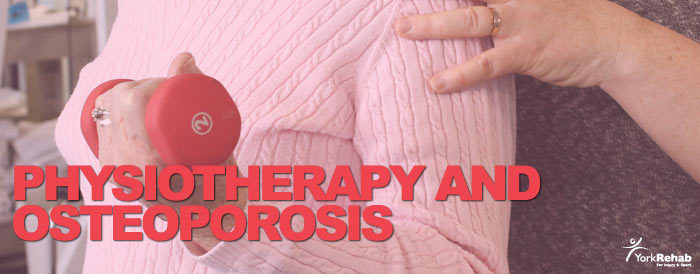
Can Physiotherapy Help People with Osteoporosis?


Osteoporosis is a condition which affects millions of North Americans and millions more are at risk. Osteoporosis, which means “porous bone” is characterized by decreased bone density and structural deterioration of the bone. As a result the bones become weak and brittle. This brittleness can then result in bones that can fracture much more easily than normal. For example, fractures may occur with just coughing or sneezing, bending over, or lifting. The fractures typically occur in the hips, spine, or wrists. Women are four times more likely to develop the condition than men.
In most cases of osteoporosis, the bones weaken when you have low levels of calcium, phosphorous and other minerals in your bones. Many more individuals may have low bone density (osteopenia) and are at risk of developing osteoporosis. Your bone density can be evaluated by a bone density test.
An important factor in decreasing the risk of developing osteoporosis is ensuring your diet includes adequate vitamin D and calcium. And even if you already have the condition, it can help to prevent bones from getting weaker. Exercise, especially weight bearing exercises, in the first two decades of life is the best way to ensure you develop good levels of bone density because as we age our bone density will gradually decrease. So if you don’t have good density to begin with, you are greater risk later on.
Nevertheless, exercising throughout life is an important way to keep your bones stronger. The best exercises include strength training, weight bearing, and flexibility. Strength training consists of using resistance (eg. free weights, resistance bands, weight machines etc.) to build muscles. In particular, the arm muscles and posture muscles. Weight-bearing exercises slow down mineral loss in the bones and include activities such as walking, dancing, and hiking. Flexibility exercises help to maintain joint and muscle mobility and this in turn improves posture as well as balance. Improving balance decreases the risk of falls which can easily cause fractures in osteoporotic bone.
If you have osteoporosis it is a good idea to consult your physician to determine the severity through a bone density test before embarking on any exercise program .A physiotherapist can then assist you to develop an appropriate and safe program. In general, individuals with osteoporosis should avoid high impact activities such as running, and jumping. As well, exercises that involve bending and twisting, such as touching your toes, rowing machines, and full sit-ups, should be avoided as they increase the risk of compression fractures in the spine.
Comments are closed.

